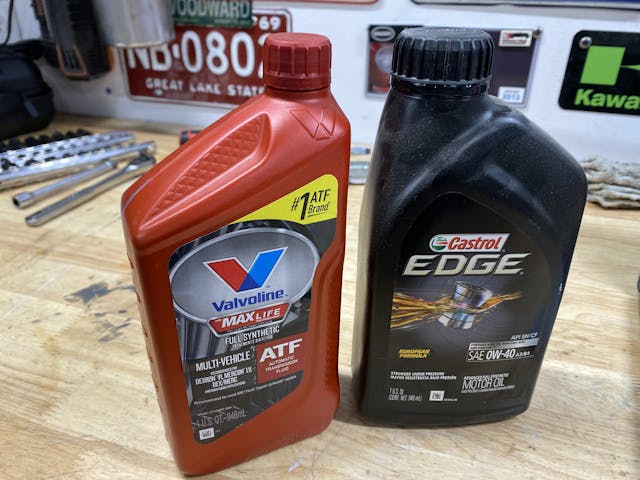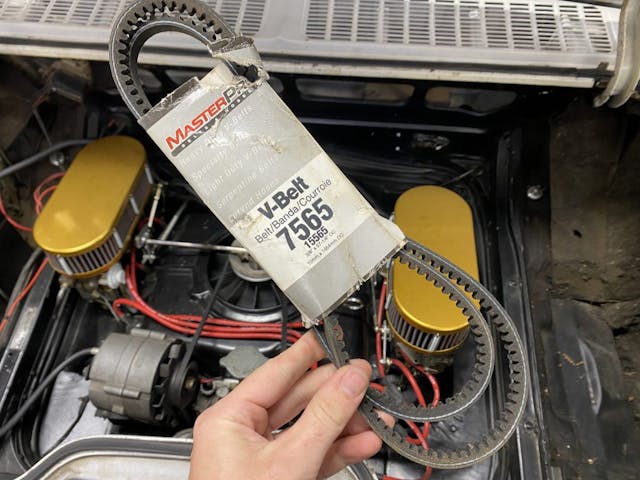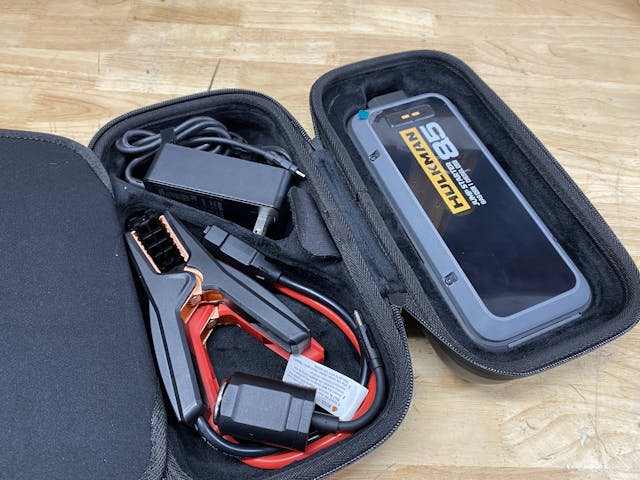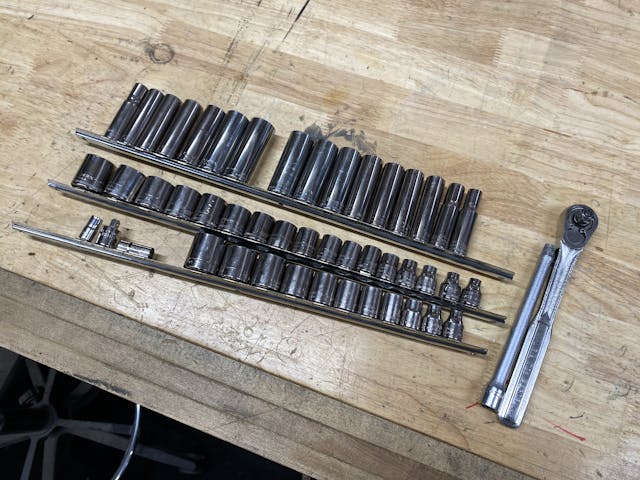6 essentials for your travel toolkit
Don’t let the fall colors scare you into pickling your car for winter just yet. In many parts of the country, this is the best time to be out on the road. Color tours are spooling up all over the northeast, and as the temps drop in the southwest, vintage cars are returning to the roads—but that means more than a few will likely end up on the roadside too. Set yourself up for success and pack a toolkit to at least handle the basics.
Of course, for bigger trips or questionable cars, it makes sense to pack a big kit that could cover just about everything, but that is not right for every person or situation. As the old saying goes, the best time to build a toolkit for your vintage ride was yesterday and the second best time is right now. Even if you aren’t handy or do your own maintenance it is never known who might stop and offer help and without tools that good Samaritan is reduced to good thoughts. Here are six basic essentials for your travel toolkit.
Screwdrivers

Much of any car is assembled with slotted and Phillips-head screws, and even a precursory inspection often requires removing an access panel or cover. Sometimes a noise or vibration does not indicate immediate death for your car or engine, and after inspection you can determine if it is safe to carry on your way despite some part or piece misbehaving. A screwdriver can also act as a stethoscope in a pinch too, allowing you to track down a goofy noise for better diagnostics with less disassembly.
Pliers
Whether you need to deal with a stubborn spring hose clamp or moving a piece that got a little hot, pliers are the tool for the job. At bare minimum you should carry needle nose and slip joint pliers, as these will cover the vast majority of tasks on the roadside. Bonus points if your needle nose pliers have a cutting edge, as this will work for wiring repairs or stripping.
Fluids

We can’t live without water, and your engine can’t live without oil and coolant. They’re the fluids you’re most likely to lose and can still safely refill and continue your drive. Some folks will tell you to carry brake fluid, but if you’re losing brake fluid, that’s not something to top off and continue. Your brakes are a critical safety system that should be repaired properly by a pro, and your Hagerty roadside assistance card is going to be the best tool to use if the brake reservoir runs out while on the road.
Belts

Most vintage engines run simple V-belt setups, but that system has been usurped by the serpentine belt. Relying on a chain parts store to have a variety of V-belts can be a big ask since they likely don’t sell many and thus only stock the most popular sizes. Belts are light and pack down small, so having the proper belts for your car is a no brainer.
Jump pack

Batteries go flat. It just happens sometimes, especially on vintage electrical systems in which small draws can go unnoticed until its too late. A jump pack can provide the juice to get your engine running again or keep it running in a real pinch. Also, most jump packs these days are small and light, while also packing more punch than ever. A bonus is it allows you to charge your phone or other critical accessories if you find yourself stranded and waiting for a tow.
Sockets and wrenches

Yeah, duh. It’s hard to take anything apart or service pieces without the ability to remove nuts and bolts. If you are handy and want to carry the bare minimum, start by looking under the hood and picking just the wrenches and sockets for jobs you are willing to do on the roadside. If in doubt, grab a full set of shallow and deep sockets for both SAE and metric, because you never know what hack might be hiding under the hood where someone previously mixed hardware. This also gives you the chance to be the hero in someone else’s story when you have the socket they need in order to leave the car show.
Bonus: Tool roll

Personally, I hate random things rolling around my car, doubly so if they make noise. A simple tool roll is cheap and allows you to keep all your trip-saving bits and pieces together. Tuck it all under a seat or in back with the spare tire, and rest easy each time you take the car out knowing that you’ve got at least the bare minimum needed to keep your trip on the road rather than the shoulder.
Is there something you’d add to a super basic toolkit? Leave your suggestion in the comments below.
Check out the Hagerty Media homepage so you don’t miss a single story, or better yet, bookmark it.





I don’t leave home without the the multimeter & fuses. Now, I recognize that fuses by themselves don’t solve the problem, but I’d sure rather keep popping in fuses and drive a 2300 rpm than drive in 4th and the 4k rpm drone. I can resolve the issue after I get to the home garage.
In fact, even my modern truck carries fuses as the starter pops the fuse at inopportune times. I’m pretty sure I’ve identified the problem and it’s gonna be a PITA. So right now, it’s fuses.
a couple fuses wouldn’t hurt
Vice grips (which can double as a clamp) and a set of jumper cables
Duct and electical tape and vise grips.
Mechanics wire, fuses, and your Hagerty roadside assistance card.
1. Duct Tape. A very large roll.
2. Large plastic lock ties
3. 25 + ft High Strength rope for emergency towing or getting out of ditch.
4. Road flares
5. When all else fails – a 6 pack to pass the time waiting for a flatbed to arrive.
Duct tape, electrical tape, fuses, portable jack, and of course a hammer
I have a 24″ x 24″ x 60″ diamond plate aluminum box mounted on the front of my car trailer. Think tow truck under box style cabinet. It has a flip down door that functions as a work bench or picnic table. Three drawer middle box cabinet mounted inside. Full sets of screwdrivers, wrenches, 1/4 – 1/2 socket sets. metric and standard. Dewalt 20V 1/2″ drive impact. Torque wrench (lugs). Floor jack. VOM, soldering gun, electrical basics. 18v 1/2″ drill and bits. Room for the tie downs. 12V small air compressor. Spare trailer bearings and seals. More Fix o Flat and tire repair kit. This has come in really handy with various events while on the road, think about the extra stuff you might need when towing.
a few feet of wire with basic connectors installed.
Small fire extinguisher ( if you don’t have one in the car already) fuel lines, pumps, and carburetors can leak at anytime
Car shouldn’t be started or leave the garage without the extinguisher!! Good one
Funny some suggest you can’t make roadside repairs. I suppose maybe it depends on the definition of roadside. My 59 Willys CJ5 needs constant attention. I have disassembled and re-assembled the carb, bypassed a clogged fuel filter, and once limped back to my trailer (mostly coasting) after breaking an external oil line. Sure, maybe these could have been prevented by better pre-tip work, but that doesn’t always work out. I always carry a tool bag and a spare quart of oil. I also include a cheap voltmeter, a hacksaw blade, a small can of WD40, a tube of RTV silicone, and a spark plug socket. Why the hacksaw blade? Long story but I have used it.
Consider JIS screwdrivers instead of standard Phillips head. The teeth on the tip will bite into Phillips head screws and will loosen most “stuck” screws.
Vice grips are essential. And they need to be authentic from Irwin. The copies just don’t compare. Two different sizes at a minimum. And ditch the “jump starter”. You really don’t need one if you are up on maintenance.
A small, yet properly sized floor jack, along with a cordless impact driver and socket, will make tire changing quicker, easier, and safer.
Duct tape, spool of bailing wire to tie stuff up that might have come loose.